The Tefillin of Qumran: Archeology and Halacha
| Switch to Video |
More in this section
-
29:19The Cairo Genizah
-
44:26The Silent Exodus
-
37:15Made in Medieval England
Join the Discussion
I wouldn't necessarily agree that Essenes being non Pharisee makes them automatically nonOrthodox/-prax. In fact, based on our limited understanding of them they seem to be to me, at least intuitionally- a chumrot-rich Pietist movement- i.e., an Orthodox sect which considered the 613 and 7 binding, even if they interpret those differently. (Fun fact: I found an article written by a Christian resident of Japan once discussing a lost tribe Japan theory. Shintoism has an Akeidah-like ritual and their priests wear "tefillin" that look like the archaic smaller round silo-shaped ones which used to be known in Jewish practice.) (I also heard once that an Israeli study was done where tefillin were found to channel (most potent) purple energy- which I would think is a reference to true color violet crown chakra energy of the 'Buddha body' of the chakric 'Russian nesting doll' light bodies). Reply
excellent information. Reply
The order of the head tefillin follows shimusha rabba. Reply
Thank you so much I think there is a mistake at the 18 min mark. There, the rabbi describes right to left as going from the tefillin wearer's right to the tefillin wearer's left. However Rambam and others explain that right to left means from the perspective of the reader (i.e. the perspective of someone standing opposite the wearer). Reply
The Tefillin of Qumran
The Tefillin from Qumran cannot be trusted at all as to the order of the Parshiot.
1) The people who wrote the Qumran Tefilin were Essenes and not Pharises.
2) Maybe the Tefilin that were found were part of a Genizah, where Tefilin written in the wrong way were discarded.
Judah Mansbach
Reply
From Rabbi Lawrence Schiffman: Rabbinic tradition testifies to disputes over the order of the passages enclosed in the tefillin. The evidence of the Qumran tefillin as a whole reveals fluidity in this regard- different phylacteries follow different sequences. We find the same situation in the Bar Kokhba caves, although here we find no additional passages besides the required ones. It seems that in Second Temple times, the order was not yet fixed as rigidly as it is today. And we cannot establish whether the tefillin from Qumran followed the order of the two major types known from later times as Rashi or Rabbenu Tam, named after the protagonists who continued this argument into the medieval period.
Because the Rabbis forbade insertion of additional passages to those required, scholars have theorized that those tefillin found at Qumran containing only required passages are Pharisaic-type tefillin. The Qumran sectarian tefillin are those which contain additional passages. Although this
Reply
thank you! Excellent...thank you! Reply
Rabbi Yonatan Adler on Tefillin
This fascinating talk by scholar Rabbi Yonatan Adler, on the history of Tefillin, was brilliantly presented, yet easy to follow and comprehend.
Please let me know when we can expect to hear more from this amazing scholar. Thank you Rabbi Adler, for a very enlightening and
interesting lecture.
Reply
Toda Rabba!!
thank you R. Adler for providing this interesting talk. I really look forward to more talks about archeological subjects in the holy lands from the perspective of orthodox judaism; i hope in the near future.
I agree: a very very fruitful topic.
Reply






The speaker says that there were 27 tefillin parshiyot but only two were placed inside the boxes. But what about the 27? Surely there were some shel yad parchments? And how were those ordered?